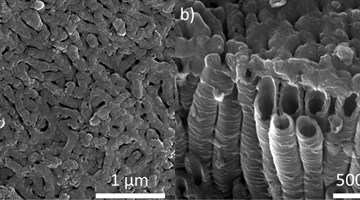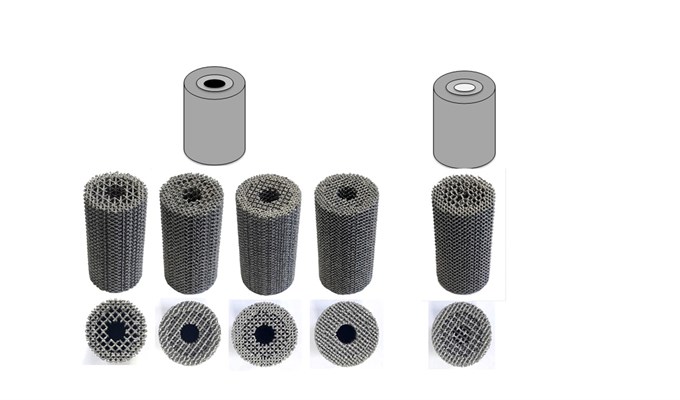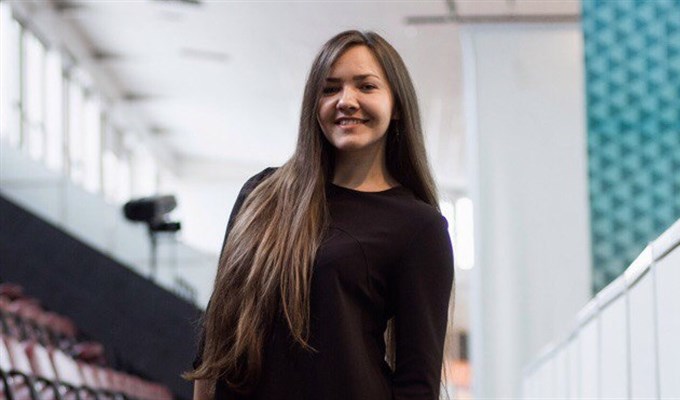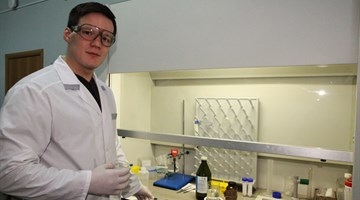TOMSK, Feb 9 – RIA Tomsk. Testing of scaffolds developed at
Tomsk Polytechnic University began (TPU) in St. Petersburg, in R. Gorbacheva Memorial
Research Institute of Children's Oncology, Hematology and Transplantation.
Scaffold – is a metal frame placed in a bone defect. Experts check whether it
will "germinate" by living cells, whether it will become a part of
the body.
Bacteriological tests performed earlier in Slovenia proved the antibacterial
effect of coatings of Tomsk scaffolds, brought scientists one step closer to
the creation of an implant "from an old age".
Why scaffolds are needed
The life expectancy of people is increasing, and one of the weak points at the
elderly person – is the bones. Therefore, the search for new effective methods
and materials for the reconstruction of bone defects – is a popular topic in
biomedicine. It is clear that young people, because of injuries damaged the
bones also need this.
© с сайта Томского политехнического университета
Modern scientists are no longer working on "prostheses" that would
replace damaged areas, but over the regeneration of tissues and organs. The
body itself can restore bone tissue, but it needs to be helped in it: to put on
the damaged area such a scaffold (frame for a new tissue), which, firstly, will
not be torn away, secondly, it stimulates the process of bone formation.
"The organism is aggressive towards the implant: it perceives it as a
foreign body and tries to get rid of it", – the engineer of the Laboratory
for Plasma Hybrid Systems of Nuclear Science & Engineering Laboratory TPU
Ekaterina Chudinova explains the main problem. Therefore, the structure and
coverage of scaffolds should be as close as possible to natural bone tissue – to be taken as "own".
"Our scaffolds have a porous, reticular structure, due to this, living
cells can germinate into the material, which can not be achieved using
monolithic structures. Over time, cells "envelop" the entire
framework and it will become a part of the body. "Right now, the
specialists of the Research Institute of Children's Oncology, Hematology and
Transplantation named after Gorbacheva in St. Petersburg are exploring how
cells will grow when placed on our sample", – says Chudinova.
© Предоставлено Екатериной Чудиновой
Scaffold – is a mesh frame made of titanium alloy
What's inside
The scaffolds with which the engineers of laboratory work are made from an
alloy of titanium, aluminum and vanadium. Due to its strength, lightness,
biocompatibility, this alloy is widely used in biomedicine to replace
dysfunctional hard tissues. Frameworks are printed by polytechnicians on a
special 3D-machine at Mid Sweden University in Östersund, using one of the most
advanced methods of three-dimensional printing – electron beam melting.
"A layer of titanium alloy powder is applied, it is leveled with special
rakes, then an electron beam passes through to melt the powder. And in that
way layer by layer the given model reproduces. And this is the advantage
of additive technologies – it is possible to print everything you name it,
there would be a model!" – Ekaterina Chudinova explains.
Metal implants made in this way can in detail repeat the complex microstructure
of the bones.
Chudinova also draws attention to the gradient structure of scaffolds – at the
edges it is created more dense than inside, because the main pressure falls on
the peripheral parts. Cavity inside is needed to place any substance which will
promote the further growth of tissue.
© предоставила Екатерина Чудинова
Ekaterina Chudinova specializing in physics (graduated last year), but she constantly comes into contact with chemistry and microbiology within the framework of the research.
What new polytechnicians invented
Swedish colleagues put implants in the form in which they now exist, – just
metal. Tomsk scientists of the Laboratory for Plasma Hybrid Systems are still
engaged in scientific research - they are looking for options of modification
of the surface of scaffolds. Catherine explains:
"Titanium belongs to the group of bioinert materials, and for improvement
of its biocompatibility it is better to apply coating. We proposed to spray
calcium-phosphate coatings on the surface of scaffolds and precipitate silver
nanoparticles. Calcium-phosphates are the main mineral constituent of bone (up
to 90% in composition), they belong to the group of natural metabolites, that
is, stimulate the processes of bone formation".
© с сайта ТПУ
Silver is known for its antibacterial effect.
"In 2017, I completed an internship at Jožef Stefan Institute where I was
engaged in microbiology. In particular, I conducted antibacterial tests – on
how the coatings will behave if they get bacteria. The tests confirmed that the
use of silver nanoparticles reduces the risks of infection during
surgery", – says Chudinova.
In parallel, Tomsk researchers are trying to improve the physical and
mechanical properties of scaffolds. When installing the implant, there is a
problem – a strong strain appears on the border with the bone, and with strong
mechanical stress the bone begins to break.
"It is necessary to maximally approximate the modulus of elasticity
of the implant to the modulus of bone elasticity. This is quite difficult – the
quantities are very different. Now we are trying to solve this problem by using
other alloys, in particular, low-modulus alloys with zirconium and niobium.
Very few people work with them – they rather expensive and are not easy to get.
But they have amazing properties!", – the scientist tells with
inspiration.
How is it assessed in the world
These experiments are closely monitored by colleagues from all over the world.
The last article about the manufacture of two- and three-layer scaffold mesh,
published in the journal Materials and Design (IF 4,364, Q1) by the employees
of the School of Nuclear Science & Engineering (by Maria Surmeneva, Roman
Surmenev, Ekaterina Chudinova, Mikhail Tkachev and Svetlana Gorodzha), became
the most media out of all scientific publications of TPU scientists in 2017.
It had the highest altimetric indicators, that is, the results of the work of
polytechnicians were most often mentioned and used on the Internet and traditional
media. Any achievement in the field of 3D-printing immediately becomes
noticeable in the world ...